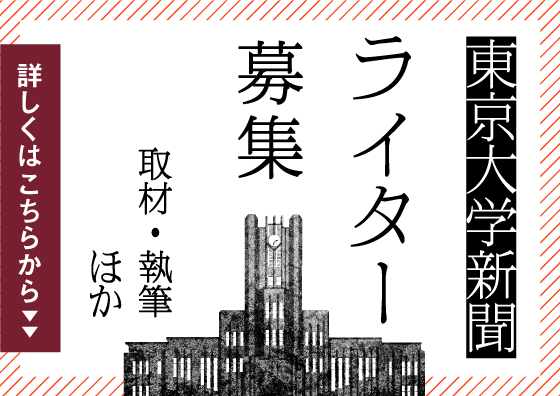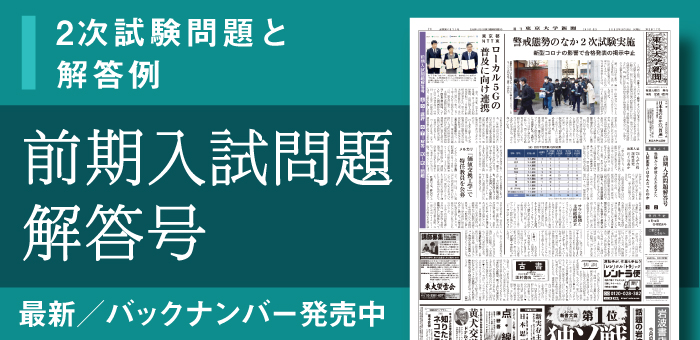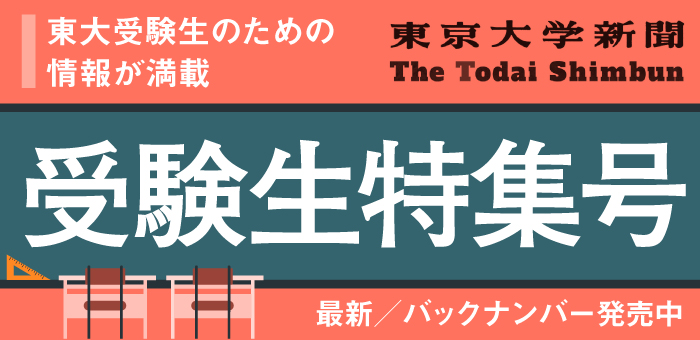We, without doubt, lay ourselves in “places,” which, if we heed the specialty of things therein or the history therewith, appear to us as having a variety of meanings. In this serial article, we aim to contemplate various “places” found in Todai’s campuses with the cultural geographer Dr. James Thurgill, who interprets “places” by employing a knowledge of the humanities that spans philosophy, history, anthropology, and so on. Our fifth meeting is at the Komaba Pond on Komaba Campus.
(Interviewed, Written and Translated by Mon Madomitsu)
【Part 1】
Take a Walk through Todai’s Campuses with Dr. Thurgill #5 Komaba Pond, Komaba Campus 【Part 1】
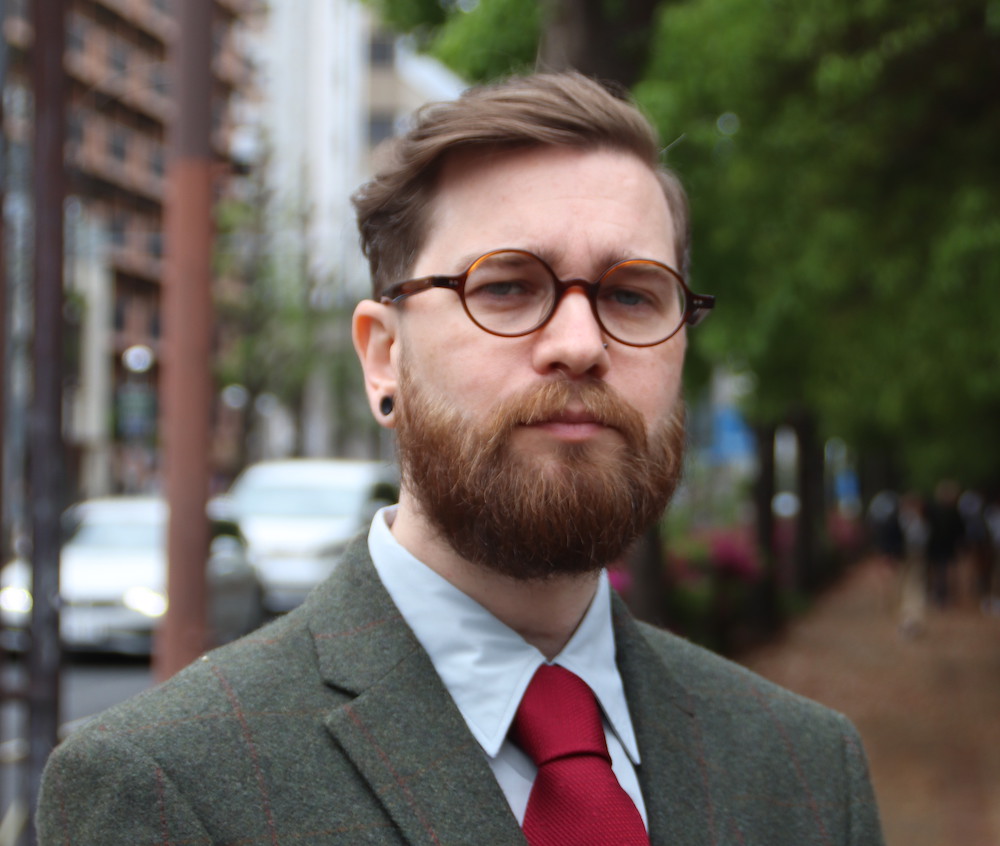
The World That Unfolds on Each Occasion
In the previous article, we have shown that “space”, when its meaning is invested through human attachment, turns into “place”. From this perspective, it can be thought that Komaba Pond, as a space, is a single, homogenous area, yet understood as a place, we might perceive it as divided into at least two parts.
As discussed in Part 1 of this article, within Komaba Pond there exist both “off-limits” and accessible areas. In the accessible area, one can actually walk to the very edge of the pond, thus it is possible to perceive that area as a “place” through the physical and emotional attachments we can forge there.
The “off-limits” area, on the contrary, allows us to be involved in the space only through our looking down into the area from the higher ground surrounding the pond from which the steps lead down, or through our reading of the map at the entrance to the pond. “Looking down” is not a good option here, for there are overgrown trees surrounding the site that work to obscure our view. In order to grasp the whole area we must depend upon the map alone to provide us with a complete view of the site. Yet a physical experience like that we can enjoy in the accessible area is impossible from glancing at a map, as Dr. Thurgill states, “A map is nothing but what is abstracted and idealized from a space.” Consequently, the two areas – the accessible and the “off-limits” – exist differently as places.
This point becomes even more apparent when considered through the German philosopher Martin Heidegger’s concept of “world”. According to one of Heidegger’s major works, Being and Time, the world is not simply given to us as a preexisting geometric space; instead the world unfolds before us every time we encounter things that surround us. The world becomes known to us through our being-in-place.
As an example, let us consider the bridge that crosses both edges of the pond. This bridge is not a straight line, but has a change in angle at its center, as if it were composed of two rectangular plates that had been slid and conjoined side-by-side (Photo 1). Due to the short width and the lack of a barrier along the edges of the bridge, we must initially focus our attention on the placement of our feet so as not to lose our footing as we walk across the bridge. What we heed in this moment is actually our movement over the water, and upon this relationship between the water and our bodies, an understanding of the world – and our being within it – begins to unfold. (If you are lucky enough, at this point you may even witness a snake swimming vigorously from one side of the pond to the other, as I did during this interview).
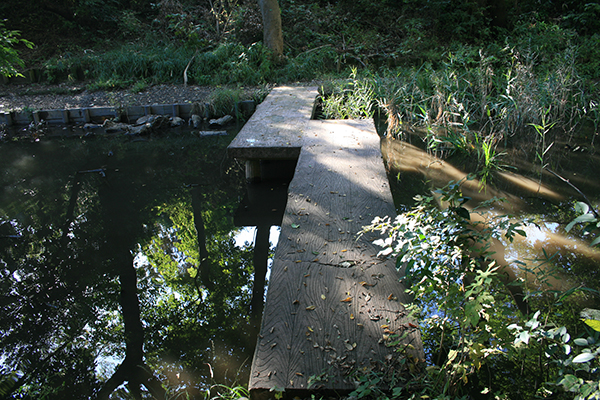
Gradually we get used to the bridge and our focus shifts to the landscape on the right side of the pond. This is because to the left exists a less well-maintained area of the pond, consisting mostly of rocks and weeds (Photo 2). Whereas on the right, there unfolds an unobstructed view of the pond’s surface, surrounded by well-shaped trees. Here unfolds another new world for us to perceive.
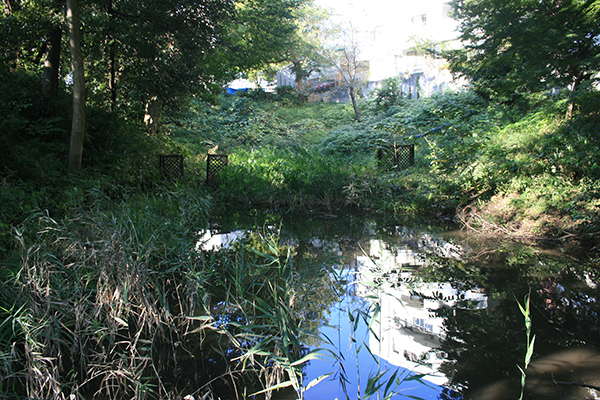
Yet as we reach the midpoint of the bridge, both our view and our body are somewhat forced toward the left, coerced into following the direction in which the path of the bridge is turned. Consequently, we will now encounter the world that is the end of the pond.
From the Heideggerian concept of “world”, it can thus be understood that each time we physically engage with the diverse phenomena in the accessible area of Komaba Pond, the world appears to us differently, and consequently we encounter the diversity of “place”. Contrastingly, such an encounter with “place” is impossible in the “off-limits” area, whose location we can confirm only by looking down from the high ground or from checking the map.
Dr. Thurgill points out that our perception of the end of the pond will eventually lead to the perception of the whole pond. Since Komaba Pond is long and narrow with a curve in its middle, if we stand on the bridge and look toward the right, it seems as if the pond were an endlessly flowing, continuous river. Yet by looking at the “end” of the pond to our left, we can finally understand that this is not a river that flows far ahead of us, but is instead a pond with clear limits and a fixed locality. Dr. Thurgill thus states: “Just as we come to understand the pond itself through perceiving the end of its waters, presence only becomes perceivable to us when it is preceded by absence.”
【Japanese Version】
サーギル博士と歩く東大キャンパス⑤ 駒場Ⅰキャンパス 駒場池【後編】
【関連記事】
Take a Walk through Todai’s Campuses with Dr. Thurgill #1 Akamon, Hongo Campus
Take a Walk through Todai’s Campuses with Dr. Thurgill #2 Sanshiro Pond, Hongo Campus
サーギル博士と歩く東大キャンパス③ 駒場Ⅰキャンパス 1号館
Take a Walk through Todai’s Campuses with Dr. Thurgill #3 Building 1, Komaba Campus
サーギル博士と歩く東大キャンパス④ 本郷キャンパス 総合図書館 【前編】
Take a Walk through Todai’s Campuses with Dr. Thurgill #4 General Library, Hongo Campus 【Part 1】
サーギル博士と歩く東大キャンパス④ 本郷キャンパス 総合図書館 【後編】
Take a Walk through Todai’s Campuses with Dr. Thurgill #4 General Library, Hongo Campus 【Part 2】
【サーギル博士と歩く東大キャンパス⑤】駒場Ⅰキャンパス 駒場池【前編】
Take a Walk through Todai’s Campuses with Dr. Thurgill #5 Komaba Pond, Komaba Campus 【Part 1】




